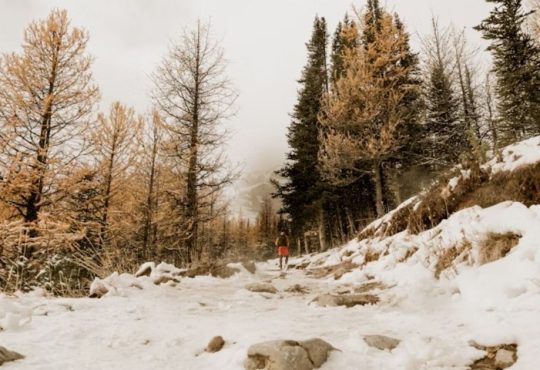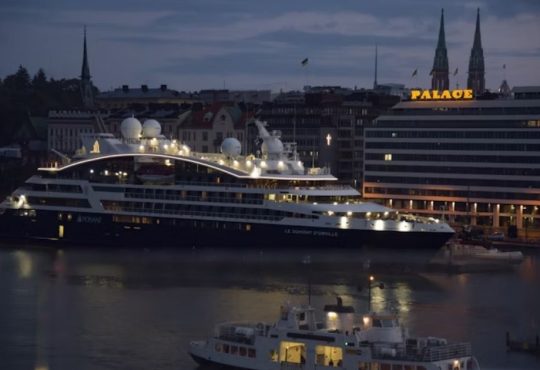Every traveler has a bucket list—but some journeys are less about sightseeing and more about spellbinding. Across the globe lie destinations woven with myth and mystery, places where legends are more than stories—they shape landscapes, cultures, and the way people experience the world. From dragon-peppered peaks to sacred springs whispered about in epic poems, these legendary spots invite travelers to see and believe.
Whether seeking adventure or a brush with the mystical, here’s a look at some of the world’s most enchanting travel spots, lore-soaked places worth adding to your itinerary.
10 Enchanted Travel Spots Steeped in Lore
1. Avalon, United Kingdom – Where Myth and Memory Intertwine
Though its coordinates remain obscured by centuries of speculation, many eyes turn to Glastonbury Tor—an ancient hill crowned by a solitary tower that looms like a sentinel between realms. This windswept rise, sacred for generations, echoes with the hush of forgotten rites, while the nearby ruins of Glastonbury Abbey crumble gently into the soil, their stones steeped in stories of monarchs and mystical quests.
Avalon is not merely a tale from old tomes but a place where myth breathes through the land. The Chalice Well Gardens, whispered to guard the Holy Grail, exude a quiet reverence as waters rich in iron spill from the Earth in a timeless offering. Across this landscape, mysticism continues to pulse—carried in candlelit ceremonies, solstice chants, and the glimmer of quartz in cottage shop windows. In the mists and meadows of Somerset, past and present blur, and Avalon persists—not on any map, but in the resonance of sacred ground and the shimmer of legend held aloft by belief.
2. Mount Olympus, Greece – Where Myth Reigns Above the Clouds
Steeped in divine drama and timeless grandeur, Mount Olympus is more than just Greece’s highest peak—it’s mythology carved into stone. Once considered the celestial home of Zeus and his tempestuous family, this 9,573-foot mountain towers above the Aegean coast with an authority still commanding reverence. The ancients believed its cloud-covered summit was unreachable by mortals, a sacred stronghold from which gods pulled the strings of the mortal world. Today, those clouds still swirl mysteriously, especially at dawn, giving hikers the sensation of climbing into myth.
The trails leading up Mount Olympus traverse alpine meadows, lush forests, and jagged cliffs—each step echoing with millennia of legend. It’s a place where nature and mythology blend seamlessly, from the thunderous silence of high ridges to the whispers of nymphs in shaded groves. The Enipeas Gorge, believed to be the bathing spot of Artemis, adds another layer of lore to the landscape. Whether reaching for the summit or pausing at a lower refuge, visitors encounter breathtaking views and a living narrative where gods once walked and the mythic still lingers in the mountain air.
3. Sedona, Arizona, USA – Vortexes and Vision Quests
Sedona’s red rock formations rise from the Arizona desert like sculptures shaped by myth and time. Widely recognized for concentrated energy vortexes, the area is often associated with healing, spiritual clarity, and heightened intuition. These naturally occurring energy centers enhance meditation and emotional balance, particularly at sites such as Cathedral Rock and Bell Rock, where an unmistakable sense of presence lingers, regardless of scientific interpretation.
The region’s mystique extends beyond metaphysical associations. Long before modern interest, Indigenous communities such as the Yavapai and Apache regarded the land as sacred, conducting ceremonies within its canyons and cliffs. The sunset casts a warm glow across the rugged terrain, transforming the sandstone towers into glowing monoliths, while nighttime reveals skies dense with stars. The atmosphere evokes stillness and spiritual intensity, rooted as deeply in ancestral reverence as natural wonder.
4. Loch Ness, Scotland – Watching the Waters for What Hides Below
No list of mythic destinations is complete without a creature of legend, and Loch Ness continues to reign supreme in cryptid lore. Nestled in the Scottish Highlands and perpetually veiled in mist, the loch stretches deep and dark, an ideal hiding place for Nessie, the elusive Monster said to lurk beneath its cold waters. For nearly a century, tales of a long-necked, dinosaur-like creature have sparked global fascination, accompanied by grainy photographs, sonar scans, and numerous speculative documentaries. Whether viewed as a prehistoric survivor or an optical illusion fueled by folklore, Nessie remains a beloved part of Scotland’s mythic landscape.
Even without a monster sighting, Loch Ness remains captivating with its undeniable allure. Its vast, brooding waters and ever-shifting mist create an almost unearthly atmosphere, particularly when fog drapes the surface and the wind stirs gentle waves. Urquhart Castle’s weathered outline clings to the loch’s edge, a ghostly reminder of battles waged and legends born.
Nearby villages, such as Drumnadrochit, welcome skeptics and the Nessie faithful, offering immersive experiences through local museums, guided boat rides, and tales passed down from generation to generation. Whether legend or illusion, the loch keeps eyes scanning the depths in case something stirs.
5. Bagan, Myanmar – A Landscape of Legends and Temples
Bagan feels less like a destination and more like a mirage suspended between history and the heavens. Scattered across a sunbaked plain along the Irrawaddy River, over 2,000 temples and stupas rise like stone sentinels from a dream—some untouched by time, others softened into poetic ruin. Born from the spiritual fervor of the Pagan Kingdom’s golden era, these sacred structures—etched with whispering murals and celestial motifs—read like a vast open-air scripture.
The monuments pulse with silent hymns of faith, dynastic pride, and a universe imagined through mortar and myth. As dawn breaks over Bagan, the view becomes almost surreal—golden light bathing the spires, hot air balloons floating silently overhead, casting soft shadows on the Earth below—a fleeting glimpse where the divine quietly fuses with the tangible in a hush of reverence.
Despite political turmoil and shifting travel landscapes, Bagan remains a place of peace and spiritual significance, drawing visitors who seek beauty and a connection to something timeless. Whether explored by bicycle, e-bike, or on foot, Bagan’s sacred geometry and ancient stillness linger long after the visit ends.
6. Uluṟu, Australia – The Living Rock of the Dreamtime
In the heart of Australia’s Red Centre, Uluṟu rises like a story carved from stone—massive, mysterious, and deeply sacred. Also known as Ayers Rock, this sandstone monolith is more than a geological wonder; it’s a living cultural site tied to the beliefs of the Anangu people. According to Tjukurpa (Dreamtime stories), Uluṟu was formed by ancestral beings and remembers their actions within its ridges, caves, and waterholes. Each crease and curve is part of a larger spiritual narrative that has guided and shaped Indigenous life for thousands of years.
At sunrise and sunset, Uluṟu shifts color dramatically—from ochre to burnt orange to deep crimson—casting a spell over all who witness it. The base of the rock reveals ancient rock art and sacred sites, many of which are still used for ceremonies today. While climbing is no longer permitted out of respect for its holy status, walking the perimeter allows for deep immersion into the landscape’s cultural significance. Uluṟu is not just a destination—it’s a living presence, pulsing with ancestral energy, and a powerful reminder of the world’s oldest continuing culture.
7. Snæfellsjökull, Iceland – Iceland’s Most Enchanted Volcano
In a country where folklore breathes through the lava fields and elves are consulted on construction projects, Snæfellsjökull stands as one of Iceland’s most enchanted sites. This glacier-capped volcano on the Snæfellsnes Peninsula is legendary in Icelandic lore and literature. Immortalized in Jules Verne’s Journey to the Center of the Earth, the mountain is rumored to be a gateway to Earth’s core—and possibly even other dimensions. With its striking silhouette and magnetic aura, it’s no wonder the site continues to attract mystics, dreamers, and hikers alike.
Beyond the fiction, locals believe the glacier holds spiritual energy, especially during celestial events such as solar eclipses or solstices. Its remote setting only heightens the mystique: black sand beaches, lava fields, and crashing waves create a dramatic scene that feels like the edge of the known world. On clear days, Snæfellsjökull dominates the horizon like a white-crowned sentinel. On misty ones, it disappears entirely, as if swallowed by the myths it inspires.
8. Machu Picchu, Peru – The Lost Citadel Among the Clouds
Rising nearly 8,000 feet above sea level, Machu Picchu is a triumph of Incan ingenuity and a puzzle lost to time. Dubbed the “Lost City of the Incas,” its cloud-kissed stone walls, steep terraces, and ceremonial sites remain mysterious centuries after its rediscovery. Who exactly lived here? Why was it suddenly abandoned? And how did the Incas, without iron tools or wheels, construct something so precise and aligned with celestial events? These unanswered questions only deepen the magic of the place, lending it an almost otherworldly energy that captivates all who visit.
Some believe Machu Picchu was a royal retreat, while others consider it a sacred site devoted to astronomical observation and spiritual rituals. Myths abound—whispers of hidden gold, ley lines, and sun temples built perfectly harmoniously with solstices and equinoxes. And yet, standing among its perfectly carved stones, the silence speaks loudest. The site feels not just ancient, but alive. Whether reached via the Inca Trail or by a winding train ride through the Sacred Valley, Machu Picchu continues to cast a spell—part history, part legend, entirely unforgettable.
9. Mount Kailash, Tibet – The Spiritual Summit of Asia
Rising more than 21,000 feet in the remote reaches of western Tibet, Mount Kailash isn’t just a mountain—it’s a cosmic anchor, revered by four of the world’s significant religions and venerated as Lord Shiva’s sacred and everlasting sanctuary in Hindu belief.
Buddhists consider it the universe’s spiritual axis, anchoring cosmic balance and enlightenment. Jains believe it’s where their first Tirthankara achieved liberation, while Bonpos, Tibet’s indigenous spiritual practitioners, also see it as deeply sacred. Despite its staggering height and dramatic presence, no one has ever climbed it, out of respect and belief that doing so would desecrate its divine essence.
Pilgrims from around the world journey here not to conquer it, but to circle it. The ritual of walking the 32-mile “ora” path around Kailash is believed to cleanse lifetimes of karma and bring spiritual transformation. The terrain is harsh, the altitude dizzying, but the devotion is profound. Prayer flags flutter in the wind, yak bells echo across the plains, and the mountain looms silent, unmoving, eternal. In an age of restless travel and overexposed landmarks, Mount Kailash remains something rare: sacred, untouched, and awe-inspiring in its stillness.
10. The Bermuda Triangle – Nautical Legends and Vanishing Acts
Spanning the waters between Miami, Bermuda, and Puerto Rico, the Bermuda Triangle has long been the stuff of maritime mystery. The “Devil’s Triangle” is associated with a series of mysterious disappearances—ships vanishing without a trace, aircraft going silent mid-flight, and compasses spinning inexplicably. Over the decades, this slice of ocean has inspired a tidal wave of theories, including magnetic anomalies, time warps, rogue waves, alien abductions, and even underwater civilizations. Skeptics chalk it up to weather patterns and human error, but that hasn’t stopped the legend from growing.
Whether fact, fiction, or a blend of both, the Bermuda Triangle has cemented its place in the modern mythology of travel. Books, films, and documentaries continue to explore their eerie allure, and adventure-seekers still shudder when crossing those coordinates. Today, cruise ships sail through its waters and planes cross overhead daily without incident, but the lore lingers—proof that mystery, wrapped in enough salt air and speculation, refuses to sink.
The Magic Behind the Myth
What makes these places so captivating isn’t just their beauty or history—the stories they carry. Myths give landscapes emotional texture, adding layers of meaning that transcend tourism. Visiting a legendary site often means stepping into a collective dream, one shared across time, culture, and imagination.
In a world that often feels overexplained and GPS-tagged to death, wonder still exists in the spaces between certainty and belief.
Where Belief Keeps the Magic Alive
Whether you’re chasing dragons through misty mountaintops, seeking gods in crumbling temples, tracking ghosts down cobbled alleyways, or retracing the footsteps of ancient heroes across battle-scarred plains, myth-based travel is far more than a physical journey. It’s a soul-stirring pilgrimage through the landscapes of imagination, history, and belief. The magic of these places doesn’t come from spells or enchantments—it comes from the stories we pass down, the legends we whisper, and the age-old wonder that still lingers in the air. The magic is real—not because it has to be, but because enough people have chosen to believe that it is. And in that shared belief, myths live on.





